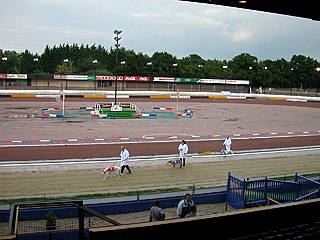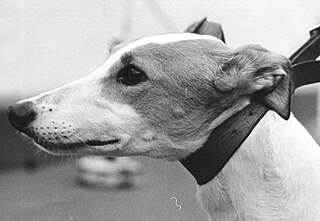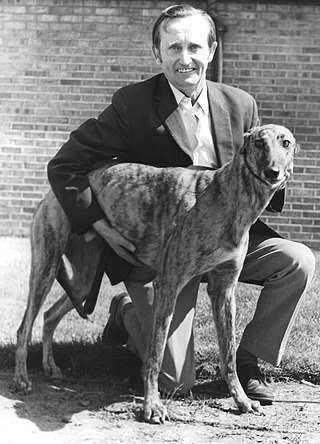
Walthamstow Stadium was a greyhound racing track in the London Borough of Waltham Forest in east London. It was regarded as the leading greyhound racing stadium in Britain following the closure of White City in 1984. The stadium closed on 16 August 2008.
Harringay Stadium was a major greyhound racing and motorcycle speedway venue in Harringay, north London. It was built and opened in 1927 and closed in 1987.
Romford Greyhound Stadium, referred to as Coral Romford Greyhound Stadium is a greyhound racing track located in Romford town centre in the London Borough of Havering in east London which is owned and operated by the Ladbrokes Coral group. The stadium has a capacity for over 1,700 people.

Catford Stadium was a historic greyhound racing stadium in Catford, a suburb of London.
The Athletic Grounds was a stadium in Rochdale, Greater Manchester, England. It was the home of Rochdale Hornets Rugby League Football Club for over 90 years until 1988. It has also been used for speedway, BriSCA F1 Stock Cars and greyhound racing.
Loomer Road Stadium is a former sports stadium situated in Chesterton, Staffordshire. The building had considerable parking facilities, covered terracing and a bar with a view of the track. It had a capacity of 5,000. The stadium was constructed in the early 1970s and hosted greyhound racing until 2003, and speedway and stock cars until its closure at the end of the 2019 season.

Brandon Stadium, also known as Coventry Stadium, is located 6 miles east of Coventry in Brandon, Warwickshire, England. It was the home of the Coventry Bees motorcycle speedway team. It also hosted BriSCA F1 Stock Car Racing on the 1st Saturday of the month from April through to November. From 1978 until early 2016 it intermittently hosted greyhound racing. As of 2023, it is closed and has become dilapidated after several fires, including an arson attack in 2022.
The Clapton Stadium, also known as Millfields Road, was a football ground and greyhound racing stadium in the Lower Clapton area of London.
Southend Stadium was a former greyhound racing and football stadium in Grainger Road, Southend-on-Sea, Essex. It was also the home ground of Southend United between 1934 and 1955 and was also known as Greyhound Park.
Warrington Greyhound Stadium was a greyhound racing and speedway stadium in Arpley, Warrington.

Reading Stadium (Oxford Road) was a greyhound racing stadium and short lived speedway venue in Reading.
White City Stadium was a greyhound racing and speedway stadium in Old Trafford, Greater Manchester, England.
The 1928 UK & Ireland Greyhound Racing Year was the third year of greyhound racing in the United Kingdom and Ireland.
The 1930 UK & Ireland Greyhound Racing Year was the fifth year of greyhound racing in the United Kingdom and Ireland.
The 1937 UK & Ireland Greyhound Racing Year was the 12th year of greyhound racing in the United Kingdom and Ireland.

The 1960 UK & Ireland Greyhound Racing Year was the 34th year of greyhound racing in the United Kingdom and Ireland.

The 1968 UK & Ireland Greyhound Racing Year was the 42nd year of greyhound racing in the United Kingdom and Ireland.

The 1972 UK & Ireland Greyhound Racing Year was the 46th year of greyhound racing in the United Kingdom and Ireland.
The Hook Estate and Kennels was a greyhound racing kennels facility located just off Coopers Lane Road in Northaw, Potters Bar, Hertfordshire.
James Stanley Biss known as Stan (1892–1952) was a leading English greyhound trainer. He was a seven times winner of the Oaks in addition to winning the Scottish Greyhound Derby and Welsh Greyhound Derby.









